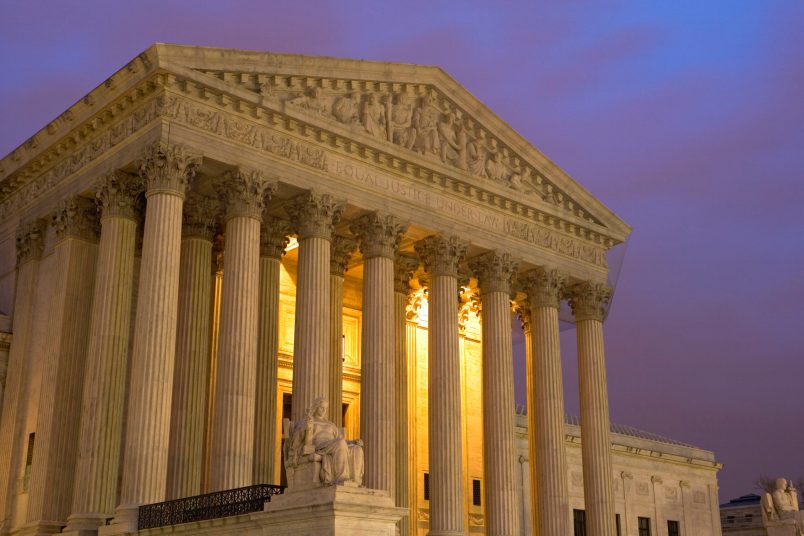The Supreme Court ruled Friday that abortion providers in Texas can sue certain state officials to preemptively block the state’s six-week abortion ban. However, the law will stay in effect for now.
The thorniess of the decision is evident in the many splits between the justices.
Justices Neil Gorsuch, Samuel Alito, Amy Coney Barrett and Brett Kavanaugh agreed that abortion providers can sue executive licensing officials.
Chief Justice John Roberts and Justices Sonia Sotomayor, Elena Kagan and Stephen Breyer found that abortion providers can sue the licensing officials, the Texas attorney general and state clerks.
Justice Clarence Thomas alone said that the providers cannot sue at all.
The executive licensing officials the justices reference hold positions within various state medical entities that would have to take action against the abortion providers if they violated the law.
The court has cleared the way for preemptive lawsuits to proceed against that limited set of people, sending the action back down to the state level. The ruling gives abortion providers a narrow pathway to thwart the law’s tricky enforcement scheme and to challenge it in court.
“We won, on very narrow grounds,” Whole Women’s Health, the abortion provider, responded on Twitter. “Our lawsuit can continue against the health department, medical board, nursing board, and pharmacy board. We’d hoped for a statewide injunction, but no clear path to it.”
The Texas ban was specifically crafted to dissuade preemptive lawsuits by outsourcing its enforcement to private individuals, likened by Sotomayor to bounty hunters. Those individuals can sue anyone who “aids and abets” a pregnant woman in receiving a post-six week abortion. Successful suits net the individual at least $10,000 and attorneys’ fees recouped. A failed lawsuit gets the defense nothing.
Opponents of the law are thus stymied in trying to block the ban before someone’s potentially on the hook for thousands of dollars. If random individuals are enforcing the law, Texas argued, there’s no clear person to sue ahead of time.
The ruling comes weeks after the Court heard back-to-back oral arguments on two lawsuits centered on the Texas abortion ban: one in which abortion providers sued a bevy of state officials, and one in which the Department of Justice sued the state of Texas. The court also on Friday, minus the dissenting Sotomayor, dismissed the United States’ lawsuit challenging the same law.
During oral arguments, the conservative justices had expressed apprehension about the law, which is purposefully structured to evade judicial review. They also, though, quibbled with plaintiffs’ suggested means of blocking the law which deputizes individuals to enforce it, the better to slip out of preemptive lawsuits.
The liberal justices occasionally let their disdain for the “clearly unconstitutional” law shine through their questioning.
When the lawsuit was first wending its way through the courts this summer, the ultra-conservative 5th Circuit Court of Appeals intervened before the district court could even hold a hearing on whether to block the law.
The abortion providers went to the Supreme Court, desperate enough to seek help from the majority-conservative bench, and asked it to put the law on hold while the lower courts deliberated. The Supreme Court did not respond to the request, letting the law silently take effect on Sept. 1. The Court’s conservatives (minus Chief Justice John Roberts) wrote an unsigned paragraph denying the providers’ request for emergency relief. The other four, Roberts and the liberals, dissented.
The Texas case is mere prelude to what experts see as the true deciding moment for abortion rights: a 15-week abortion ban out of Mississippi that encourages the conservative majority bench to revisit the constitutionality of abortion rights head-on. The Court heard the case in December.
This is a developing story; this post will be updated.



